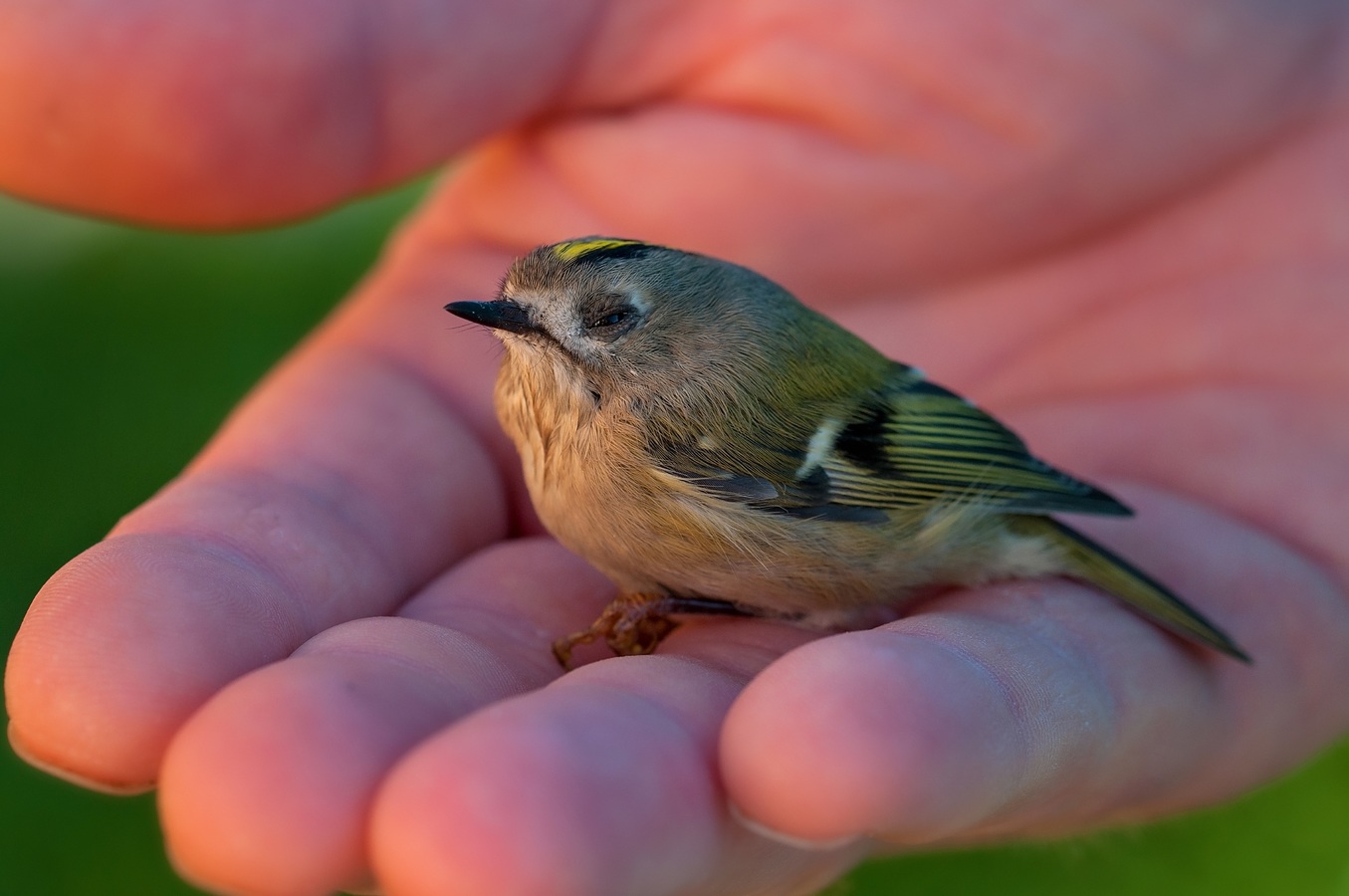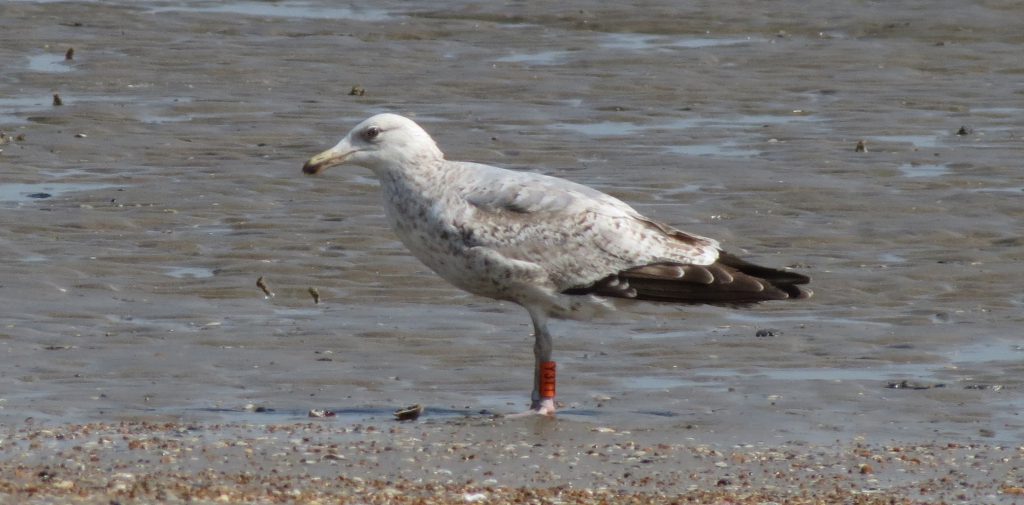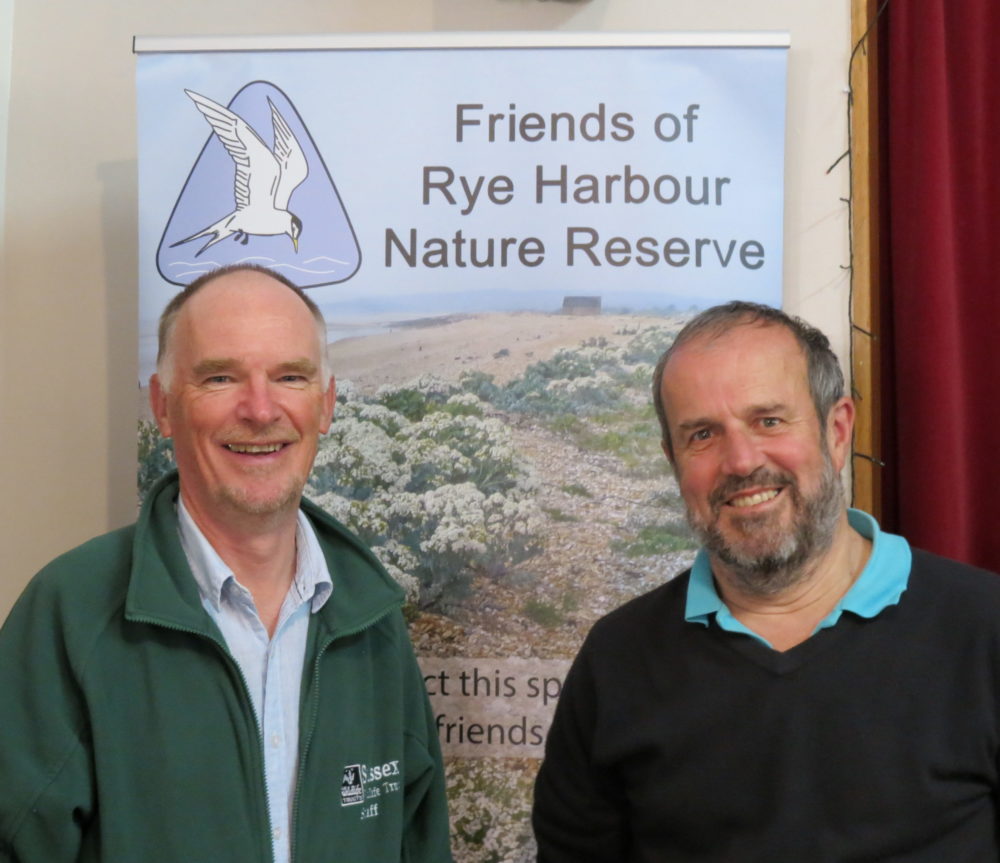Forget the rustle of falling leaves and scent of bonfires, one of the true signs of autumn is when the Rye Harbour Nature Reserve’s What’s On list starts to include its Friends’ Winter Talk series.
The winter season for 2018-19 started on Saturday October 20 at Winchelsea Beach Community Association Hall, with a talk on bird ringing given by Phil Jones.
Despite kicking off the winter series, the day itself brought the type of unseasonably bright and warm weather that usually has bird enthusiasts out and about across the reserve, rather than sitting inside listening to bird-talk. But in reality, these talks generate such enthusiasm and interest that, as the blinds were pulled to shut out the sunshine, there were very few spare seats available.
Speaker Phil Jones has extensive knowledge of bird ringing, having been monitoring birds worldwide since the 1980s. He also rings birds locally down at the Pannel Valley reserve at Pett and is an expert not only on the practicalities of bird ringing, but also on the migration and conservation information that ringing provides.
The talk began with a brief introduction to the history of humans’ interest in birds, before progressing to insights into the use of mist nets for catching the birds. The main talk was then on the practicalities and purpose behind the ringing of birds. The talk was accompanied by beautiful images, as well as shots of the process, including the equipment used.

For someone like myself, whose knowledge is more at the twit end of twitching, it was fascinating to see photos of the ringers’ grip and hear how this is the correct way to hold a bird without putting pressure on vital organs. This delicate process, just holding safe and still, means the birds are put under as little stress as possible – particularly those fragile birds such as goldcrests which, Phil shared, weigh less than a 20p piece.
Bird ringing is a strictly licensed practice, with the 2,500 ringers in the UK undergoing five years training to qualify. Bird welfare is paramount, so telling the audience about the ringers’ grip wasn’t to encourage amateur ringing, but served instead as a demonstration of safe ways of bird handling. A useful tip, as many of us around this area spend a lot of the early summer picking up those fledglings whose first flights end abruptly with windows.
It was also interesting to learn that the majority of bird rings used worldwide are actually manufactured locally in Icklesham. Who knew that our birding corner of the country also keeps bird ringing possible around the world?
The different types of bird rings were explained and the markings on them decoded so it was possible to understand the information on them. Another fascinating fact emerged from the revelation that metal bird rings put onto birds in the UK include the address of the British Museum – BTO British Museum, Nat Hist, London SW7, to be precise – as this is easily recognisable as an address, wherever in the world the bird might be found. If a dead bird is found and the ring posted to the museum, it is then passed to the British Trust for Ornithology (BTO), along with any accompanying information such as when and where it was found.
Whilst it’s ultimately the ring on the bird which provides much of the information gathered as each ringed bird’s spotted on its travels, Phil explained how the process of ringing also helps give insight into the development and movement of each species. When it is ringed, each bird’s weight, plumage state and wing measurement is recorded to help establish how old and healthy the bird is, and to provide crucial species data.
Of course, all birds which are ringed are then released to carry on their way. When a bird with a ring is spotted alive and well, or found lost, dead or injured and the spotting or find is reported, the information gathered informs on various issues, such as:
- Migration habits, including patterns and routes.
- Conservation issues, such as the transfer of illness. A current example of this is the issue of the greenfinch population which has reduced by 90% across the UK due to trichomonosis. Data from ringing has revealed that his epidemic is now transferring between the UK to Norway and into Northern Europe due to migration patterns. Conservation issues such as population decline through loss of habitat and changing environments can also be revealed through bird ringing data.
- Feeding and visiting habits – with Phil’s example of the same sparrowhawk visiting the same locations for food year-in, year-out for 16 years.
- The lifespan of different bird species – from 18 months for tiny garden birds to 45 years for gannets and more than 60 years for other seabird species.
Finally, the talk ended with a call to action for anyone spotting a bird locally which has a ring: if you see it or find it, please report it.
- If this is in the local Rye area, and particularly on the reserve, then Dr Barry Yates, Manager of the Rye Harbour Nature Reserve, and Phil Jones would like to hear about it. Details can be passed on through the Sussex Wildlife Trust, to the information centre on the reserve or direct to either Barry or Phil.
- Otherwise, spotting of birds with rings – dead or alive – in any area of the UK, can be reported through the dedicated pages on the BTO website.
- In all cases taking a photograph can be very helpful, not least because it’s then possible to zoom in and identify the colours and numbers on the ring, especially if the bird is live and lively!

Reporting a ringed bird is very easy. The talk reminded me of my own experience in May 2018 when, out on the beach taking photos, I happened to scope a herring gull with a ringed leg.
I passed this information back on a short report form, via the links on the BTO website. Within two days I received an email telling me the bird’s species, that it was three years old and had been ringed by the North Thames Gull Group in January 2018.
The email also shared a link to a map showing the gull’s ‘spots’ so far. At that time it had progressed from a landfill site in Pitsea, Essex to parade instead on the foreshore at Winchelsea Beach. There have been no reports of sightings since, but it’s quite exciting to check the map every now and then just out of interest.
Because the topic is interesting, as the talk and the number of listeners proved. Phil not only shared practicalities but also the strong message that the ringing of birds is more than just a process, it has a real purpose in helping us understand more about nature and how this, and the world around us, is constantly evolving. In this respect, bird ringing presents a gateway to a bank of knowledge about birds which anyone can be a part of, just by looking closely and passing on what we see in this beautiful corner of the coast.
The next talk at Winchelsea Beach Community Association hall will be about the birds and wildlife of Costa Rica on Saturday November 17, from 2:30pm to 4pm. Further information about the talks and forthcoming events can be found on the Sussex Wildlife Trust website, on their Rye Harbour Nature Reserve pages.
Image Credits: Katherine Crowther , PXHere https://pxhere.com/en/photo/674164 Creative Commons Free Non Attribution , Katherine Crowther By permission, all rights reserved .



